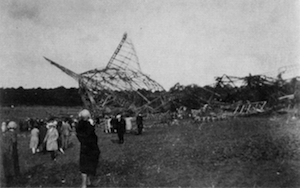Summary | Excerpt | Reviews | Beyond the Book | Read-Alikes | Genres & Themes | Author Bio

This article relates to Tender
 In Tender, Catherine Reilly takes up a job writing horoscopes, the kind that you routinely find in newspapers, generic enough to possibly apply to a wide swath of people, yet specific enough to make the individual reader feel like it was written just for him or her.
In Tender, Catherine Reilly takes up a job writing horoscopes, the kind that you routinely find in newspapers, generic enough to possibly apply to a wide swath of people, yet specific enough to make the individual reader feel like it was written just for him or her.
The word horoscope comes from the Greek words hõra (time or hour) and scopos (observer). Elaborate horoscopes and birth charts are based not only on a person's birthdate but also on the location of birth, since these data points are then used to calculate the precise alignment of the planets and stars, which in turn were believed to affect a person's path in life.
 While the ancient Greeks used horoscopes - predictions based on the position of the planets and sun - thousands of years ago, the modern-day newspaper version is a much more recent phenomenon. Daily newspaper horoscopes, a diluted byproduct of these more elaborate natal charts that were drawn up for specific individuals, are newer. British citizen R. H. Naylor, a prominent early twentieth-century astrologer, is widely credited as having birthed the tabloid versions of horoscopes. He came into prominence after Britain's Sunday Express asked him to create a horoscope for Princess Margaret (younger sister of the present Queen) a few
days after her birth in 1930 - which he did, based on her natal chart, predicting that her life would be "eventful." While that prediction might not have had strong enough legs to stand on its own, subsequent forecasts – like Naylor seeming to have accurately called an aviation disaster and then naming later events in Princess Margaret's life – indicated, perhaps, an inkling of truth in Naylor's calls.
While the ancient Greeks used horoscopes - predictions based on the position of the planets and sun - thousands of years ago, the modern-day newspaper version is a much more recent phenomenon. Daily newspaper horoscopes, a diluted byproduct of these more elaborate natal charts that were drawn up for specific individuals, are newer. British citizen R. H. Naylor, a prominent early twentieth-century astrologer, is widely credited as having birthed the tabloid versions of horoscopes. He came into prominence after Britain's Sunday Express asked him to create a horoscope for Princess Margaret (younger sister of the present Queen) a few
days after her birth in 1930 - which he did, based on her natal chart, predicting that her life would be "eventful." While that prediction might not have had strong enough legs to stand on its own, subsequent forecasts – like Naylor seeming to have accurately called an aviation disaster and then naming later events in Princess Margaret's life – indicated, perhaps, an inkling of truth in Naylor's calls.
Sunday Express assigned him a more regular column "What the Stars Foretell", and with that, regularly published newspaper horoscopes were off and running. These initially only told the horoscopes of people with birthdays that week, but under duress from the publisher to make his horoscopes appealing to a wider audience, Naylor started to rely on the popular "sun signs" of signs of the Zodiac (a concept first birthed by Egyptians). The circular Zodiac chart is divided into twelve segments and a person's sun sign is determined by the movement of the sun. For example if you're born a Libra it means you were born between September 22-October 22, when the sun was passing through that particular segment on the circular chart.
 These sun signs allowed for predictions to apply to a greater number of people and were vague enough for people to read their tea leaves in ways that suited them best. As in other fields, computers have been deployed to create natal charts even as astrologers debate their accuracy.
These sun signs allowed for predictions to apply to a greater number of people and were vague enough for people to read their tea leaves in ways that suited them best. As in other fields, computers have been deployed to create natal charts even as astrologers debate their accuracy.
R. H. Naylor's horoscope for Princess Margaret, courtesy of wikipedia
The wreckage of R101, which Naylor seemingly predicted, courtesy of wikipedia
Naylor recorded records for each zodiac sign. Here is November's, courtesy of This Devil's Interval Blog
Filed under Cultural Curiosities
![]() This "beyond the book article" relates to Tender. It originally ran in February 2016 and has been updated for the
February 2017 paperback edition.
Go to magazine.
This "beyond the book article" relates to Tender. It originally ran in February 2016 and has been updated for the
February 2017 paperback edition.
Go to magazine.
Your guide toexceptional books
BookBrowse seeks out and recommends the best in contemporary fiction and nonfiction—books that not only engage and entertain but also deepen our understanding of ourselves and the world around us.